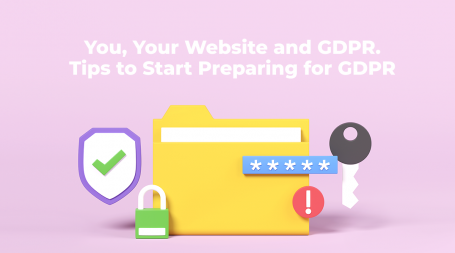Ensuring GDPR compliance is crucial when managing file transfers within your organization. Non-compliance can lead to significant fines and damage to your reputation. This article provides essential guidelines to help you stay compliant.
The General Data Protection Regulation (GDPR) affects any organization that processes personal data of EU citizens. Compliance is not just about avoiding penalties; it is about building trust with your users. Implementing best practices can make this complex task more manageable.
Understand the Scope of GDPR
To ensure GDPR compliance in file transfers, you first need to understand the scope of the regulation. It applies to any organization that handles personal data of EU residents, regardless of the company’s location. Knowing what data is considered personal and how it needs to be protected is essential. Tools such as Filemail must also comply with these regulations.
Organizations must also be aware of the rights that GDPR grants to individuals, including the right to access, rectify, and erase their data. This means that your file transfer processes should allow for these rights to be exercised easily and efficiently. Moreover, you should have protocols in place for responding to data breaches within 72 hours as required by GDPR.
It’s also crucial to understand the principle of data minimization under GDPR. This principle requires organizations to collect and process only the personal data that is absolutely necessary for the specific purpose of the file transfer. Implementing data minimization strategies not only helps with compliance but also reduces the risk associated with handling excessive amounts of personal information. Regularly reviewing your data collection practices ensures you’re not gathering or transferring unnecessary data, which could potentially expose you to greater liability.
Furthermore, organizations must be aware of the concept of “data controllers” and “data processors” under GDPR. A data controller determines the purposes and means of processing personal data, while a data processor processes personal data on behalf of the controller. This distinction is crucial in file transfers, as it determines the responsibilities and liabilities of each party involved. For instance, if you use a third-party file transfer service, you may be the data controller, while the service provider is the data processor. Understanding these roles helps in establishing clear contractual agreements and ensures that all parties involved in the file transfer process are aware of their obligations under GDPR.
Implement Robust Encryption Methods
One of the key aspects of GDPR compliance is ensuring that data is secure during transfers. Encryption is a critical tool for protecting sensitive information as it moves from one point to another. Securing your data pathways effectively is paramount.
Encryption methods should be strong enough to protect against current threats and should be regularly updated to address new vulnerabilities. It is not just about encrypting files but also about managing encryption keys securely. Access controls are equally important, ensuring that only authorized personnel can decrypt and access sensitive information.
In addition to encryption, consider implementing other technical measures to enhance the security of file transfers. This may include using secure file transfer protocols (SFTP), virtual private networks (VPNs), or blockchain technology for added transparency and security. It’s also important to regularly test your encryption methods and overall security infrastructure. Penetration testing and vulnerability assessments can help identify potential weaknesses in your file transfer systems before they can be exploited by malicious actors.
When implementing encryption for GDPR compliance, consider end-to-end encryption for file transfers. This ensures that data remains encrypted not only during transit but also at rest on both the sender’s and recipient’s ends. End-to-end encryption provides an additional layer of security by ensuring that only the intended recipients can decrypt and access the information, even if the transmission is intercepted. This approach is particularly crucial when transferring highly sensitive personal data, such as financial information or health records. For example, for travel CT techs transferring highly sensitive personal data such as patient medical records and imaging results, across different facilities, end-to-end encryption is critical. By implementing end-to-end encryption, organizations demonstrate a commitment to data protection that goes beyond the minimum requirements, further strengthening their GDPR compliance posture.
Maintain Comprehensive Records
Under GDPR, organizations are required to maintain detailed records of their data processing activities. This includes documenting how data is collected, stored, transferred, and deleted. These records should be thorough and up-to-date, providing a clear trail that can be reviewed by regulatory authorities if needed.
Your records should include information on consent obtained from individuals for data processing and any third parties involved in handling the data. Regular audits can help ensure that your record-keeping practices remain compliant with GDPR requirements. This transparency builds trust with your users and demonstrates your commitment to protecting their personal data.
Implementing a data mapping process can greatly assist in maintaining comprehensive records. Data mapping involves creating a visual representation of how data flows through your organization, including file transfers. This can help identify potential compliance gaps and streamline your record-keeping efforts. Additionally, consider using specialized software tools designed for GDPR compliance management. These tools can automate much of the record-keeping process, reducing the risk of human error and ensuring that your documentation is always up-to-date and easily accessible for audits or data subject requests.
Train Your Team on GDPR Compliance
Ensuring that your team understands the importance of GDPR compliance is fundamental to maintaining secure file transfers. Regular training sessions can help keep everyone informed about the latest regulations and best practices. It is crucial that all employees who handle personal data are aware of their responsibilities under GDPR.
Training should cover topics such as recognizing potential security threats, proper data handling procedures, and how to respond in the event of a data breach. By fostering a culture of awareness and responsibility, you can significantly reduce the risk of non-compliance due to human error.
To enhance the effectiveness of your GDPR compliance training, consider implementing role-based training programs. Different team members may have varying levels of interaction with personal data, and tailoring the training to specific roles can ensure that each employee receives the most relevant information. For instance, IT staff handling file transfers may need more in-depth technical training on encryption and security protocols, while customer service representatives might focus more on handling data subject requests. Additionally, consider incorporating real-world scenarios and interactive elements into your training sessions to make them more engaging and memorable for your team.














